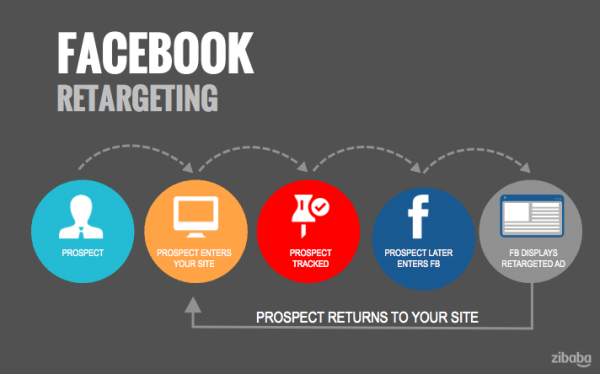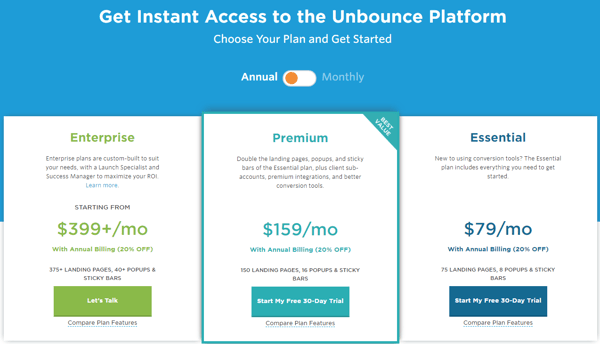How To Sell Software Online: 6 Pro SaaS Tips
How To Sell Software Online: 6 Pro SaaS Tips
Get weekly
HubSpot Updates
If you’re a SaaS company, then the internet is undoubtedly the best option for marketing and selling your product.
In 2019, people expect to purchase SaaS products online, not have to head down to their local PC World and speak with a sales rep.
However, this doesn’t mean that selling your product online is simple. You’re probably competing against dozens of similar companies (after all, SaaS can be sold globally, so you’re not restricted to the local area), while the higher the value of your product the harder you’ll have to work in order to get people to part with their cash.
Here are six how to sell SaaS tips.
- Offer a free trial/freemium membership
- Create a full funnel marketing strategy
- Be up front about pricing
- Use price anchoring
- Make it easy to cancel
- Create educational content
1. Offer a free trial / freemium membership
Free trials and freemium memberships are two of the most effective tactics for marketing SaaS products. Not only do they give users a chance to test out the value of your product for free (and, hopefully, see the benefit of paying for it), but they also get more leads into your sales funnel.
READ MORE: 7 Tips for Promoting Your SaaS Free Trial
There’s a lot to think about for SaaS companies considering the free trial / freemium model—for example, how long should a trial last, or which features should freemium include—but conducting some competitor research will help. It’s likely your prospective customers are doing a significant amount of research before making a purchasing decision, and you’re going to fall behind other providers if they’re offering users a free, hands-on evaluation of the product when you’re not.
2. Create a full-funnel marketing strategy
It’s not enough to market your SaaS product to the people actively searching for those products—you need to reach your buyer personas before they even realise they need your software.
Let’s consider an example.
123 Accounting sell an easy-to-use accounting software designed for small businesses and entrepreneurs. They have defined their primary buyer persona as Business Owner Bob. Bob spends most of his time on LinkedIn, contributing to small business groups, while he’s also relatively active on Facebook.
123 Accounting’s software is perfect for helping Bob to organise his business’ finances, but he’s never heard of the company or considered investing in accounting software before. If they market their free trial directly to Bob now he might take an interest, but the chances are the ad simply won’t register with him.
Instead, 123 should promote content tailored for an earlier stage in the buyer’s journey; for example, a blog post titled ‘3 Things Holding Back Your Small Business’. Now, this is an ad that might catch Bob’s attention. He’s doing okay, but he’s struggling to take his business to the next level—could this blog post hold the answer? As you can probably guess, one of these three things is disorganised finances.
Unfortunately, just because 123 have got Bob onto their website to read their blog, it doesn’t mean he’s going to become a lead. Even if he finds the article useful there’s no guarantee he’ll click through on a call-to-action. This is where retargeting comes in.

Image credit: Zibaba.com
When Bob lands on 123’s website, a cookie is placed onto his browser. This enables them to remarket to Bob on LinkedIn and Facebook with content intended to nurture him towards a free trial.
Marketing to cold audiences and then remarketing with further content and offers is key to a successful inbound marketing strategy. Check out our eBook on the subject: ‘6 Keys to Planning a Digital Marketing Strategy’.
3. Be upfront about pricing
Caution over publishing pricing isn’t a problem unique to SaaS companies, it’s an issue that many non-product-based organisations wrestle with.
The objections to being clear on prices usually fall into one of three camps:
- We don’t want to put people off.
- Our prices aren’t standardised; we provide bespoke quotes.
- We don’t want our competitors to find out.
That last one is easy to answer: they already know. If they don’t, it won’t be hard for them to find out if they want to.
Now to deal with those first two points.
I’d argue that not publishing your prices is more likely to dissuade people from choosing your product. Consumers want to find pricing information, and if they don’t find it on your website, they’ll find it elsewhere. If this happens, you’re not a part of the price conversation.
Let’s go back to Business Owner Bob.
He’s searching for accounting software and is doing the right thing by thoroughly reviewing his options before making his purchasing decision. He finds four providers he thinks look worth considering further:
- 123 Accounting — no pricing info displayed
- Simple Accounts — £500/month for a premium package
- Accounting Pros — no pricing info displayed
- Smart Numbers — £300/month for a premium package
At this stage, one of two things happens: either Bob simply chooses between the two providers that have published their prices after assessing whether the Simple Accounts product is worth the extra £200/month; or, he decides to contact 123 Accounting and Accounting Pros directly to ask for prices.
123 Accounting are no better off for holding back their prices, and could lose potential customers who decide to just choose between the two companies that have been upfront about cost.
Finally, just because you don’t have a standardised pricing model doesn’t mean you can’t be upfront about cost. If anything you can use this to your advantage, as all of your prices will be ‘starting from’, and therefore lower than your average subscription price.
4. Use price anchoring
Price anchoring takes advantage of human psychology to encourage selection of premium packages. Take a look at how the landing page creation experts at Unbounce do it:

By highlighting the ‘Premium’ package, placing it next to the more expensive ‘Enterprise’ package and denoting it as ‘Best Value’, users are drawn to this selection much more than the cheapest ‘Essential’ package.
5. Make it easy to cancel
All too often companies selling subscription-based services think the best way to increase customer retention is to make it difficult to cancel.
While this might work in some circumstances, ultimately it could have a negative impact on your sign-ups and company reputation.
There are two main ways a SaaS company might frustrate a user’s efforts to cancel:
- Making users call to cancel in the hope they will either a) not get around to it, or b) be talked into staying by the customer service rep.
- Locking users into long subscription periods.
The main issue with the first tactic is that you’re likely to end up with a number of disgruntled customers and ex-customers, and would you want to sign up for a service that reviewers say is hard to get out of?
Long subscription periods are quite common, while they aren’t an inherently cynical tactic like simply making it difficult to leave, but competitors who allow you to cancel at any time will always have the edge over you. Besides, if you believe in your product and it offers genuine value, your customer retention will be strong anyway.
6. Create supporting educational content
You need to ensure new users—as well as free trialists—are getting the most value possible from your software. If they don’t, they’re not going to renew at the end of their subscription period, while trialists won’t convert into paying customers.
With this in mind, create supporting content that shows users how to use the core functionality of your product. This might take the form of videos, eBooks or blogs, but whichever medium you choose it’s essential the content is clear and easy to understand.
We’d recommend short explainer videos, but you might also want to create a more comprehensive guide to help new users hit the ground running with your product.
Get more SaaS Tips that fill your pipeline
Check out our three-step system for generating a flood of leads for your business below.
Our content includes affiliate links. This means that we may receive a commission if you make a purchase through one of the links on our website. This will be at no cost to you and helps to fund the content creation work on our website.